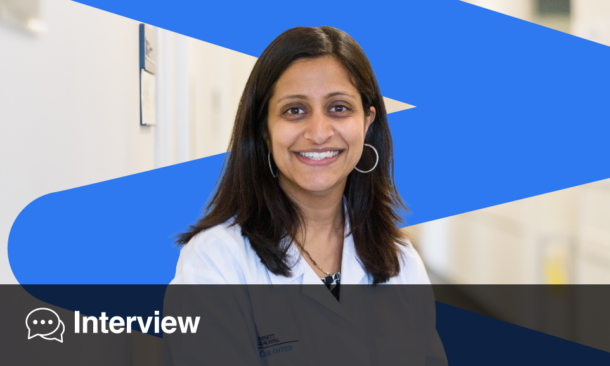Written by James Coker | Reporter, European Medical Journal | @EMJJamesCoker
![]()
The European Medical Journal caught up with Ms Victoria Thomas, who is Head of Public Involvement at the National Institute for Health and Care Excellence (NICE), at The Economist’s War on Cancer event held in London, UK on 21st November 2017. The event focussed on the patient’s perspective in regard to the cancer care they receive, something which Ms Thomas is heavily involved in with her work at NICE, an organisation in the UK that provides information and advice to health, public health, and social care practitioners. During her very busy day, Ms Thomas kindly spared the time to speak with us on a plethora of topics, including the main aims and scope of the Public Involvement Programme, how NICE consults with patients for its guidelines and recommendations, the ways in which NICE promotes shared decision-making between patients and doctors, and the efforts to help establish regular quality of life measures in clinical studies. Throughout, there was discussion of numerous new initiatives that NICE are undertaking to enhance the involvement of the general public in healthcare.
Public Involvement Programme
Ms Thomas firstly explained the three main facets of the work of the Public Involvement Programme. One is to advise the NICE board and senior management team about what evidence-based methods and processes should be used to include patients in the activities of the organisation. Then there is the collaboration with patients, in the form of both patient organisations and individual patients. “Every piece of guidance that we write is subject to public consultation, as well as every change to our methods and processes,” explained Ms Thomas.
Ms Thomas describes the most important work of the programme as the collaboration and involvement of individual patients, carers, service users, and members of the public, with around 200–250 people working with them at any one time, contributing to as much or as little work as they can manage. The overall aim is to make sure there are people with a range of experiences on everything NICE is working on.
NICE therefore endeavours to ensure that the patients involved in the process are from the widest range of backgrounds possible. Candidates have to apply in a process akin to a job application for the various NICE committees, a process which is available to all. “Anyone with an interest can apply,” stated Ms Thomas. “They don’t have to be associated with a patient group, they can be someone who has a particular condition, and is interested in doing some additional work. Then those applications are then shortlisted, and people are selected to join the committee.”
Patient Involvement
For those not selected for a certain committee, there are often still opportunities to contribute. “We’re looking at the moment to introduce what we’re calling our expert panel, which might be people who have been on committees in the past or have come and given testimony in the past,” she said. “And also, perhaps people who haven’t made it through that final hurdle but still have something really valuable to offer the organisation. They might not be right for a committee, but they might be a really good person to get some feedback on a piece of copy or a new website development or something like that. So, we’re broadening the approach that we have to involving people so that it’s not just the people that sit on our committees that are our primary means of engagement. I think we need to look more broadly now as the organisation continues to expand and we need to be more flexible about how we engage people.”
This flexibility could come to include utilising digital technologies to enable people to contribute, without necessarily having to appear in person, at committees and meetings. Ms Thomas informed us that NICE are currently looking into the possibility of allowing patients to use Skype calls or video conferencing if they are unable to attend a particular meeting, and where this suits their needs.
Challenge in Patient Participation
One challenge is providing a voice to patients from certain backgrounds, for example the BAME population and those from a working-class background, who generally do not tend to apply to take part in the NICE process. “It’s one of our equality objectives for the whole organisation to look at our committee profile,” confirmed Ms Thomas. An initiative the Public Involvement Programme is taking to improve the situation is liaising with organisations that represent people with protective characteristics: “We’re reaching out to those organisations that have much better links than we do directly,” she added.
Shared Decision-Making
We then discussed the work of NICE in promoting shared-decision making between patients and doctors. Finding ways to involve patients in decisions made about their care was a major topic of conversation at War on Cancer, and something that NICE is keen to encourage in their guidelines. “One of the things that we’re trying to do is encourage our guideline developers to think about, in the patient’s pathway, the areas where patients are likely to have to make decisions about one treatment option over another,” said Ms Thomas.
This is especially crucial as patients will have different preferences for the varied outcomes that different types of treatments offer. Ms Thomas gave the example of early stage breast cancer, where for some women there may be a strong desire to retain their breast, whereas for others removing the cancer at all costs is the priority. NICE also want to make a more concerted effort to provide the evidence to support the different treatment options in order to enable physicians and patients alike to make a more informed decision.
“At the moment we will make a recommendation that says offer the patient choices, but we don’t then articulate what those choices are. So, the idea is that we will try and support clinicians to have that consultation by eliciting the evidence that would support these treatment options,” explained Ms Thomas. “And in some cases, we’re turning them into formal patient decision aids as well, so something more patient facing that says ‘these are the kind of questions that patients are most concerned about, here are the issues according to different options’. It’s very embryonic at the moment but is something that we’re really interested in: how we can balance that idea of having to deliver a broad set of recommendations for the whole NHS while taking account of the fact that we need to address patient autonomy and individual people’s values and preferences.”
Quality of Life Measures
A crucial part of addressing the needs of patients is ensuring quality of life measures, and other outcomes of importance to patients, are systematically included in clinical trials, which they aren’t routinely. Such data could well change the therapies given to patients in many cases. Ms Thomas told us that this is something NICE consider to be of vital importance and are having conversations to encourage academic and pharmaceutical researchers to collect these data. As Ms Thomas put it: “If you’re not engaging with patients when you are developing your trials, then your ability to be confident that you are addressing an unmet need is limited; we shouldn’t just be doing research for its own sake, we should be doing it where we know it could answer a known uncertainty.”
While pharmaceutical companies are generally receptive to this principle; they often either do not consider the option or there are technical problems, such as not being allowed to directly engage with patients. However, Ms Thomas believes these sorts of issues can be overcome with the right will. NICE do also provide a service called the Scientific Advice Programme, which gives advice to companies during the early stages of drug development and can include a patient member of the panel who can provide a patient perspective. “Where companies come to us, we can provide them with that patient voice,” said Ms Thomas. “Part of the service we are offering them means that they have a patient perspective as part of what we advise them; that advice is about what they need in order to go through our appraisal processes and so for them to hear at that stage that we’re interested in perspectives on quality of life, patient experience, and what matters to patients, is really helpful for them to know.”
NICE Initiatives
There is a big emphasis from NICE to assist with the challenge of greater patient centricity and ensuring that the voices of patients are taken into account on a larger scale in the future. We look forward to seeing the development and expansion of the initiatives we discussed with Ms Thomas in this interview.







